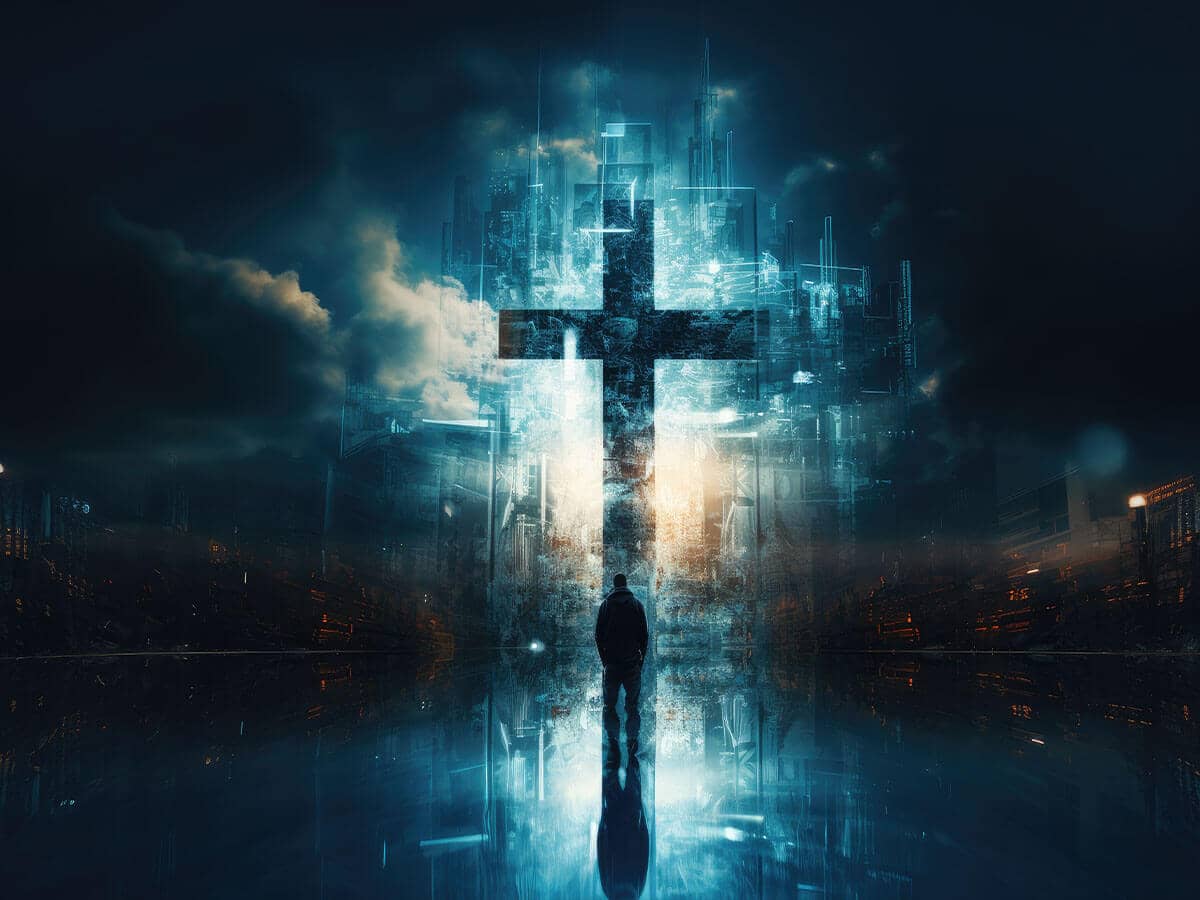When London imam Asim Khan asked ChatGPT, an artificial intelligence chatbot developed by OpenAI, to write a khutbah (sermon) on taqwa (God consciousness) that lasts 10 minutes, he was surprised by the results, which left him “lost for words.” The generative AI program provided a sermon that was not only lucid, but eloquent, he said.
He posted the video on X (formerly known as Twitter). While some commenters warned that AI would be “more harm than good” and that “Shaikh AI” should not replace the counsel of trained Islamic scholars, Khan also joked that his career might be over given how well ChatGPT responded to the prompt.
Jokes and gimmicks aside, there are now entire websites devoted to providing AI tools for pastors, preachers and other religious leaders looking to get a leg up on sermon prep. At Sermonoutline.ai — owned and operated by Sermon Central and its parent company, Outreach Inc. — pastors are promised an AI sermon generator that can produce “biblical preaching” for their next Sunday service. For just $7.50 a month, subscribers have access to sermon outlines, starter ideas and full sermon manuscripts “using the power of AI,” according to the site.
Perhaps aware of potential apprehension, one of the site’s FAQs is: “What if my church finds out I used this site?” The response:
Sermon Outline AI is a reference tool for preachers. … Preaching in any context requires knowing your audience and making your material personal. Sermon Outline AI can’t do that, only the preacher can. If your church finds out you’re here, great! They’ll know you value your time.
Beyond writing Friday khutbahs and Sunday sermons, AI has numerous practical applications for religious practices, within and without worship spaces. For example, at an Exponential Conference at First Baptist Church Orlando in March 2024, speakers Kenny Jahng, Yvonne Carlson, Josh Burnett and Corey Alderin talked about how AI could be used to boost a church’s community engagement, provide virtual worship services and create small-group Bible study guides.
While much of the attention around AI — and generative AI in particular — can be alarmist, it’s also important for students of religion to look at the technology’s increasingly common uses in religious communities and places of worship around the world.
The Book of ChatGPT Prayer
Indeed, as ethical reflections among religious leaders over AI’s use in everything from fatwas and Bible translation to the creation of autonomous weaponry and surveillance continues, communities of all kinds are adopting it — or adapting to it — as AI seems set to become a banal aspect of our everyday social, economic and religious lives (or already is).
Debates about the best ethical approach — including whether an AI religion can save or doom us all — will intensify. In the meantime, there is a Robo Rabbi for the Jewish faith; KhalsaGPT for Sikhs; Mindar, an android priest, for Buddhism; and a multilingual Islamic chatbot named “Ansari” offering spiritual remedies and Islamic perspectives in Arabic, Bahasa Indonesian, Bosnian, English, French, Turkish, Urdu and other languages.
Perhaps appealing to the growing ranks of the “spiritual but not religious,” ChatwithGod.ai wants to expand access to spiritual guidance for seekers from all religious backgrounds. It promises to “engage in conversation” with users “receiving personalized religious verses and comfort.”
Talking with a Christian spiritual director named Hannah the other day, I heard about how she is utilizing Chat GPT to generate prayer prompts. “Each morning, I wake up and ask Chat GPT what I should be praying about,” she said. The first time Hannah put Chat GPT to the test, it responded telling her that prayer can be a powerful way to engage with the world and offered broad themes for her prayerful consideration. “It encouraged me to pray for peace and unity, environmental stewardship, families and relationships, spiritual awakening,” she said, “pretty generic stuff.”
But then, as the AI conversation continued, it also deepened. Pretty soon, Hannah and Chat GPT were getting personal. “The more and more we ‘talked’ about prayer and spirituality, the more well-versed the AI became in addressing the topic,” she said, “and it started to bless my prayer practice and remind me that prayer is a deeply personal act of connection with the divine, encouraging me to branch beyond what prompts it shared to bring additional concerns or hopes to the conversation.
“In other words, it was encouraging me to be more creative with my prayer and, in effect, becoming my spiritual director,” Hannah said.
Religious technology — past, present and future
For students of religion, the challenge of AI-related spiritual practices lies in avoiding alarmist rhetoric and click-bait conversations about religion-related AI contrivances. The invitation is to instead investigate how religious actors are using AI to enhance, inform or extend their beliefs and practices in everyday life.
While “analog” religious practices like reading religion-focused books or attending in person religious services or ritual gatherings remain common, digital innovations have touched virtually all aspects of human spiritual life. As more and more religious actors incorporate digital tools into their everyday practice of faith — including AI — it’s important for the student of religion to take note.
But it’s also important to situate the contemporary digitization of faith within the much longer history of religious engagements with technology. From incense holders used in puja (reverence or prayer in Hindu traditions) and Tibetan Buddhist prayer wheels to large-print Medieval choir books and tzitzit, the fringes or tassels worn on garments by Jewish males as reminders of the commandments of Deuteronomy 22:12 and Numbers 15:37–41, various “technologies” — the application of knowledge or tools — have been used by religious actors across the ages to augment their spiritual practices.
So, as we consider how AI is becoming an increasingly normal part of spiritual practice, and may grow to become even more integral to religious rituals in the years to come, it’s important to place it within its proper context — not as only a disruptive technology that could transform religion as we know it, but as yet another tool in the ancient repertoire of spiritual technologies used by religious actors to enlarge, expand, extend or otherwise enhance their practice with the tools available in their time.




